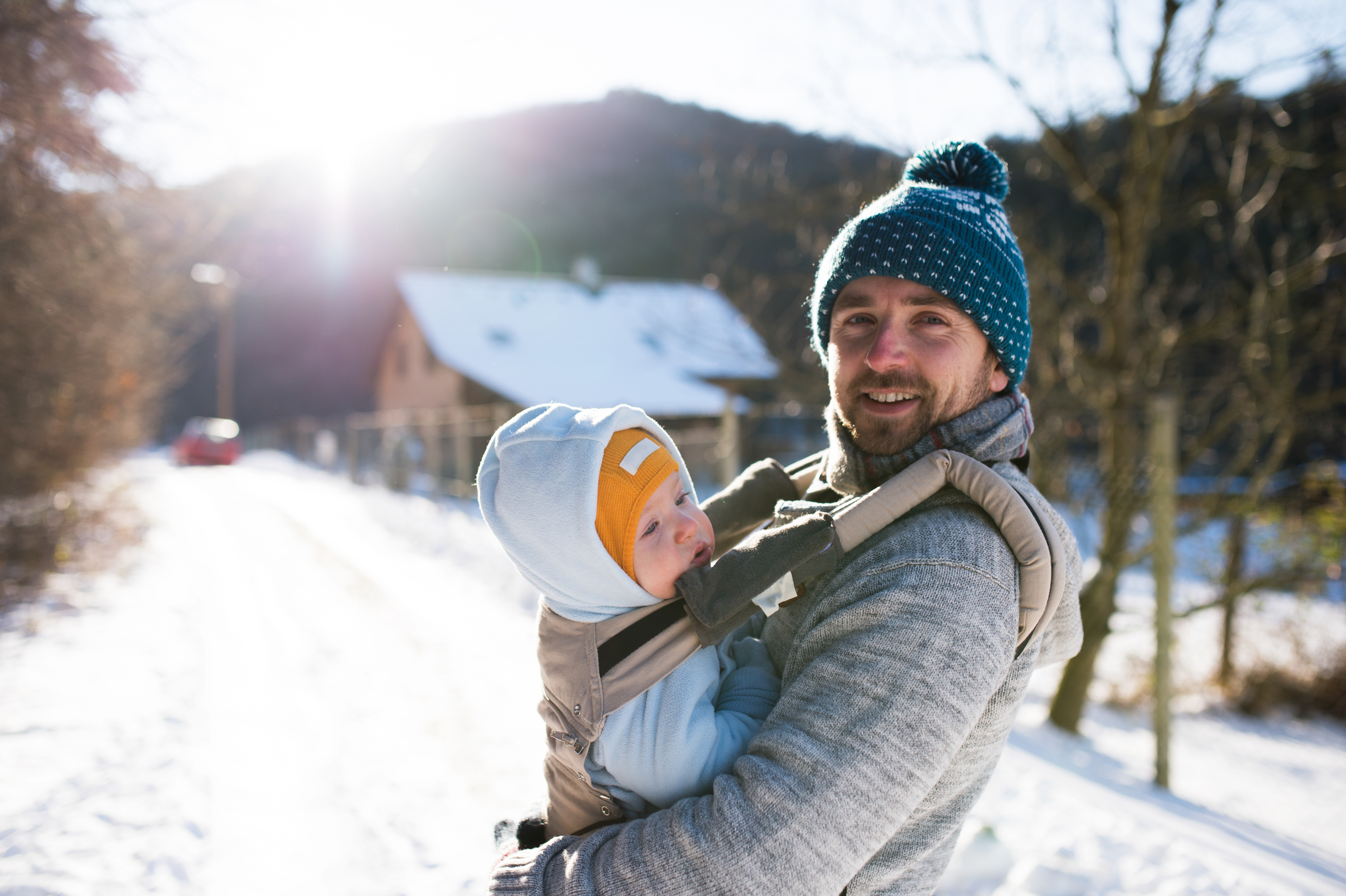Baby sling and carrier safety

Learn about baby slings and carriers and how to use them safely.
On this page
- About baby slings and carriers
- Using slings and carriers safely
- Putting younger babies in a sling or carrier safely
- What to consider when buying a sling or carrier
- Breastfeeding while baby is in a sling or carrier
About baby slings and carriers
Babies have poor neck control and are at higher risk of suffocation. Talk to your baby's doctor before using a sling or carrier.
Many parents and caregivers use baby slings and carriers to carry their babies. These products allow you to keep your hands free, while keeping baby close.
Serious injuries and deaths can occur if:
- your baby falls over the side of the sling or out through the carrier's leg openings
- your baby is positioned incorrectly
- this can increase the risk of suffocation against the product's fabric, your body or baby's own chest
- your coat is done up over your baby's face while they are in their baby sling or carrier
- this can lead to overheating and suffocation
- even coat extenders or coats promoted for baby wearing are not safe when closed over your baby
- you trip and your baby falls out of the sling or carrier
- the sling or carrier malfunctions or breaks
Using slings and carriers safely
Before you use your sling or carrier:
- check for wear and tear
- look for ripped seams, torn straps and damaged parts
- check the fastenings of your sling:
- if your sling is fastened by a knot, check that it's tied tightly
- if your sling has rings, make sure the fabric can't slip through them
Other tips:
- Be very careful putting your baby into or pulling them out of a carrier or sling. Ask for help if you need it.
- Don't use a carrier or sling when you're running or cycling, preparing meals, or eating or drinking hot food or beverages.
- Move your baby to a crib, cradle or bassinet if they fall asleep in a sling or carrier.
- If they fall asleep in a sling or carrier, their head may fall forward and block their airways.
- Use a sling or carrier designed for your baby's age and weight.
- Check the manufacturer's recommendations to learn more.
Putting younger babies in a sling or carrier safely
Babies, especially those under 4 months or born prematurely or with a medical condition, may have poor neck control and are at higher risk of suffocation. Talk to your doctor first before using a sling or carrier.
It's important to position your baby inward facing when they are young and/or have poor neck control. To ensure their airway is clear at all times and their back and neck are supported, follow the CHECK system:
Chin off chest:
- Position your baby so that their chin is not resting on their chest.
- When their chin is on their chest, it makes it harder for your baby to breath as it limits the amount of air that they take in.
- It's like trying to drink through a pinched straw.
Have your baby in view at all times:
- Make sure you can always see your baby's face and monitor their breathing often.
- Keep your baby's face away from the fabric of the carrier or sling, your body or your clothing.
Evenly support their back:
- Position your baby with their chest and tummy against you, keeping their back supported in a natural position.
- Make sure your baby's legs are not bunched up against their stomach, as this can restrict breathing.
Close enough to kiss:
- Position your baby high enough in the carrier that you can kiss the top of their head by tipping your head forward.
Keep carrier tight:
- Position your baby in an upright position in the carrier and snug enough to support their back and prevent falls.
- Check on your baby often.
- Monitor their breathing and check for overheating.
What to consider when buying a sling or carrier
Choose a sling or carrier that:
- fits your baby well
- baby's head should be above the sling or carrier
- you should be able to see their entire face
- fits you well
- has detailed, yet easy-to-understand instructions that you can follow
- make sure there are instructions if you buy a used sling or carrier
Also, check with the retailer or manufacturer if the sling or carrier meets 1 of the following safety standards:
- ASTM F2907 Consumer Safety Specification for Sling Carriers or
- ASTM F2236-16a Consumer Safety Specification for Soft Infant and Toddler Carriers
Remember to:
Breastfeeding while baby is in a sling or carrier
If you choose to breastfeed while your baby is in a sling or carrier:
- keep your baby's face in view at all times
- keep your baby in the upright position and make sure your baby's face is clear and their chin is off their chest
- check on your baby often and listen for sucking noises
- when your baby is done feeding, reposition them so that their head is not pressed against your body, the sling or the carrier